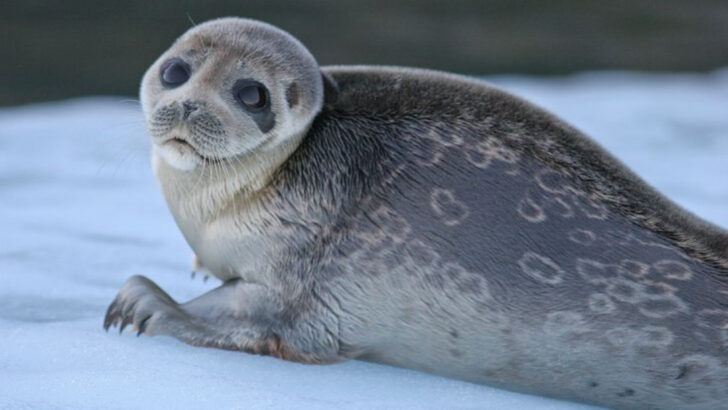They’re massive, loud, and built like underwater bulldozers. Giant seals aren’t just big—they’re beasts. These ocean rulers crash through waves, dive like torpedoes, and lounge around like royalty. With jaws strong enough to rival a shark’s and eyes that track your every move, they’re not here to play. But just when you think you know them all, surprise—there are seal species that slip under the radar. We’re talking strange names, wild looks, and mystery-packed lives few people ever see. Some dominate with brute size. Others sneak through icy waters with quiet grace. All of them are fascinating—and totally worth meeting. Get ready to meet the famous eight who rule the seas… and six lesser-known seals that just might steal the show.
Southern Elephant Seal
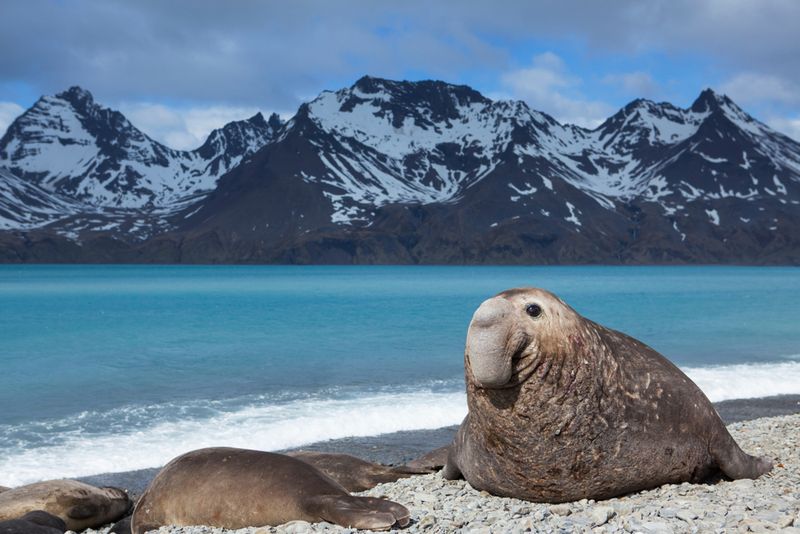
The Southern Elephant Seal, a true giant of the ocean, can weigh up to 8,800 pounds. Its most distinctive feature is the male’s large, trunk-like nose, which inflates to amplify its roars. These seals primarily inhabit the icy waters of Antarctica and subantarctic islands.
Males, known as bulls, fiercely defend their harems during breeding season. Despite their size, they are agile swimmers, diving deep to hunt squid and fish. Their enormous size helps them conserve heat in frigid waters, a remarkable adaptation for survival.
Interestingly, they spend most of their life at sea, coming ashore only to breed and molt.
Northern Elephant Seal
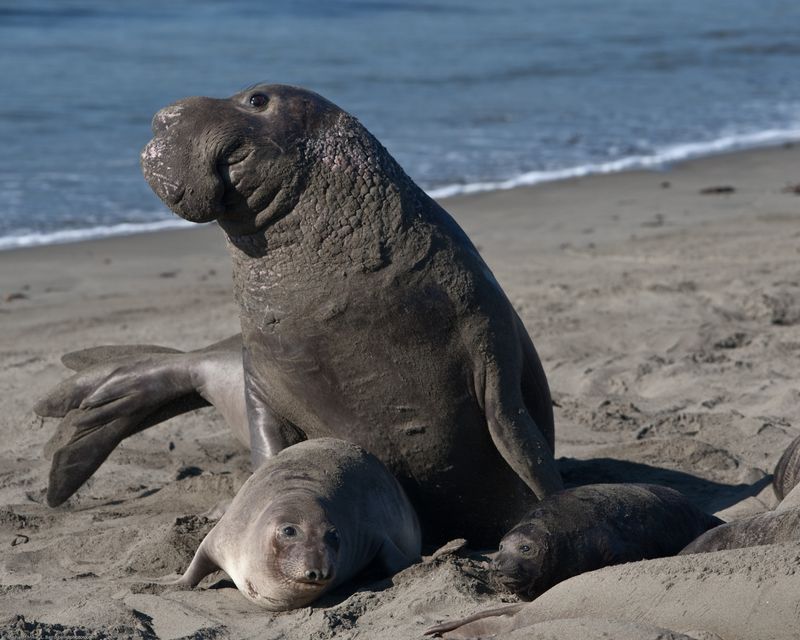
Unlike its southern cousin, the Northern Elephant Seal is found along the North American Pacific coastline, from California to Alaska. Recognized by their massive size and unique vocalizations, males can grow up to 4,400 pounds.
During the breeding season, beaches become battlefields as males fight for dominance. These seals are known for their impressive diving abilities, reaching depths of over 5,000 feet. They rely on blubber to keep warm and provide energy during long fasting periods.
A fascinating fact about these seals is their ability to hold their breath for over an hour, an adaptation for deep-sea hunting.
Walrus
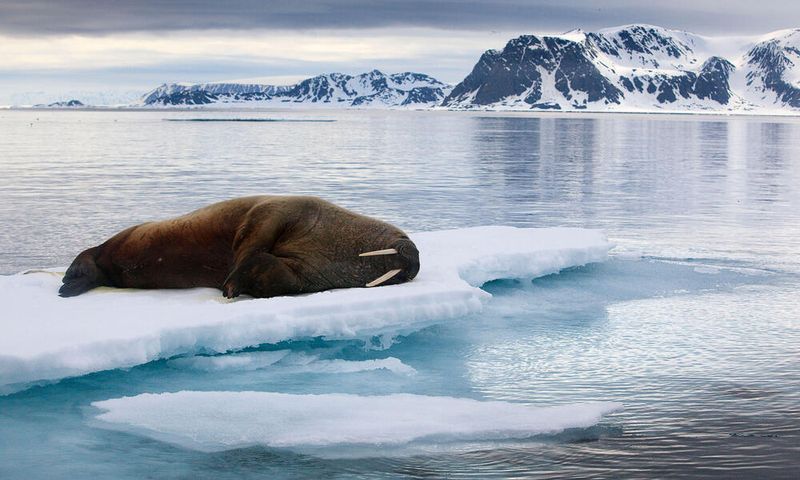
With its iconic tusks and whiskered face, the Walrus is a familiar sight in the Arctic. These tusks, present in both males and females, are used for defense, cutting through ice, and hauling their massive bodies out of the water.
Weighing up to 3,700 pounds, walruses are social animals often found in large herds. They primarily feed on benthic invertebrates, like clams and sea cucumbers, which they locate using their sensitive whiskers.
Interestingly, walruses have air sacs in their necks that allow them to float upright in the water, an adaptation that aids in resting and nursing their young.
Harp Seal
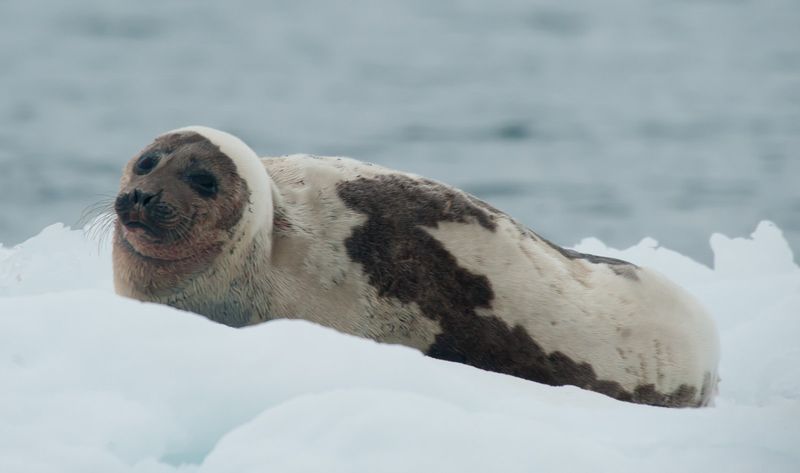
The Harp Seal, with its striking black harp-like markings on a silvery coat, is a well-known resident of the North Atlantic and Arctic Oceans. Often associated with adorable pups covered in fluffy white fur, these seals spend much of their time on pack ice.
Harp seals are highly migratory, traveling thousands of miles each year between feeding and breeding grounds. They have a diverse diet, feeding on fish and crustaceans.
Interestingly, harp seals can regulate their body temperature through a thick layer of blubber and specialized blood vessels, enabling them to thrive in icy environments.
Leopard Seal
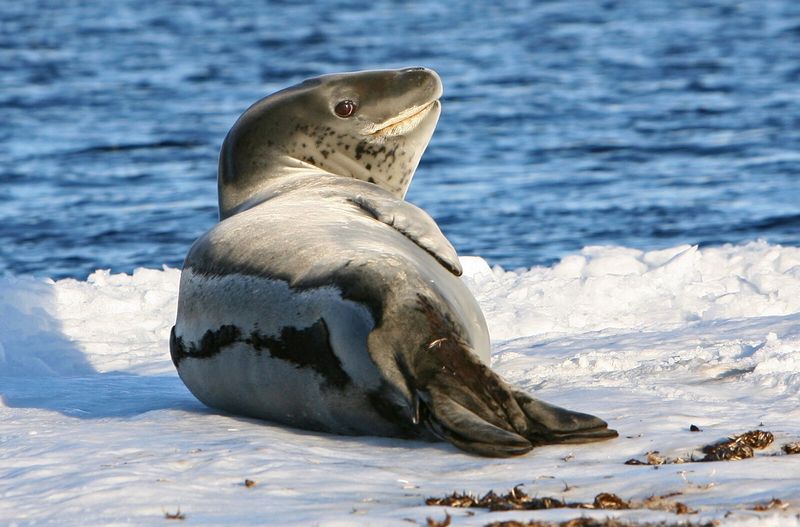
The Leopard Seal, named for its distinctive spotted coat, is one of Antarctica’s top predators. Known for its powerful jaws and long canine teeth, it preys on a variety of animals, including penguins and other seals.
Leopard seals are solitary creatures, often seen patrolling the edge of pack ice. Their streamlined bodies and strong flippers make them agile swimmers capable of chasing down fast-moving prey.
Despite their fearsome reputation, leopard seals have been observed engaging in playful behavior, such as blowing bubbles and playing with objects underwater. This dual nature makes them fascinating subjects of study.
Weddell Seal

The Weddell Seal, known for its gentle nature and large eyes, inhabits the cold waters of Antarctica. These seals are exceptional divers, capable of reaching depths of 2,000 feet and holding their breath for up to 80 minutes.
Weddell seals maintain breathing holes in the ice using their teeth, a crucial survival adaptation. Their diet consists mainly of fish, squid, and krill, which they hunt beneath the ice.
Curiously, Weddell seals produce a variety of vocalizations, which can be heard above and below the water. These sounds play a role in communication and navigation in the harsh Antarctic environment.
Baikal Seal
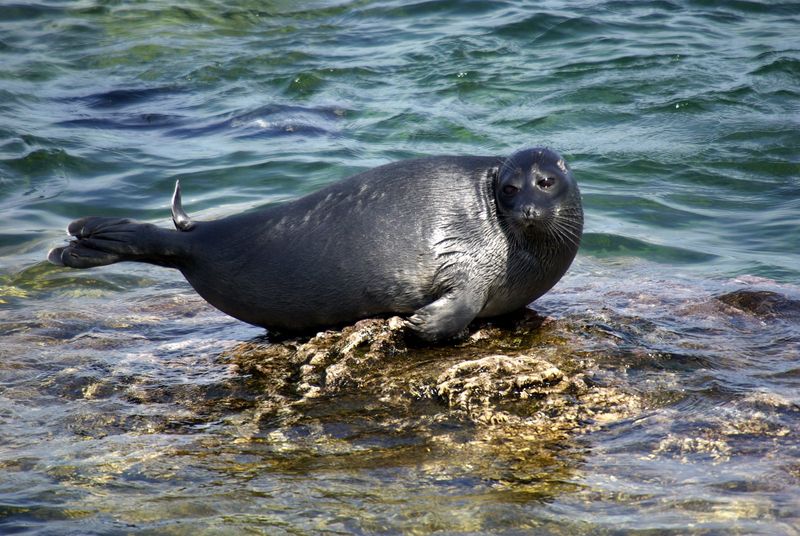
The Baikal Seal, or Nerpa, is unique as the only freshwater seal species, residing in Russia’s Lake Baikal. They are small compared to their oceanic relatives, with a weight of up to 154 pounds.
These seals have adapted to their freshwater habitat, feeding primarily on fish found in the lake. Remarkably, Baikal seals can live up to 50 years, one of the longest lifespans among seals.
During the harsh Siberian winter, they use their strong claws to maintain breathing holes in the ice. This rare species is a symbol of the lake’s rich biodiversity and natural wonder.
Hooded Seal
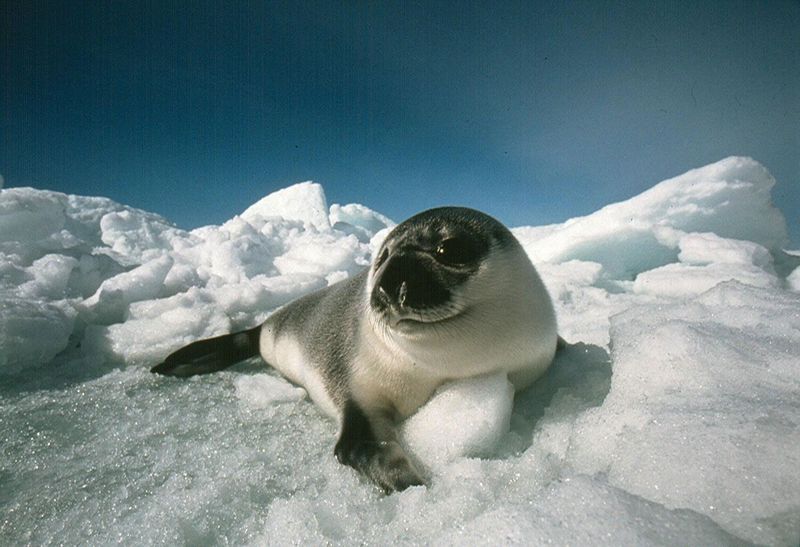
The Hooded Seal, native to the North Atlantic, is easily recognized by the male’s inflatable nasal sac, which expands into a balloon-like structure during displays. This unique feature is used to attract mates and deter rivals.
Hooded seals are relatively solitary, coming together primarily during breeding and molting seasons. They prefer deep waters and feed on a variety of marine organisms, including fish and squid.
Interestingly, hooded seal pups, known as “blue-backs” due to their blue-grey fur, grow rapidly, weaning from their mothers in just four days, one of the shortest weaning periods among mammals.
Crabeater Seal
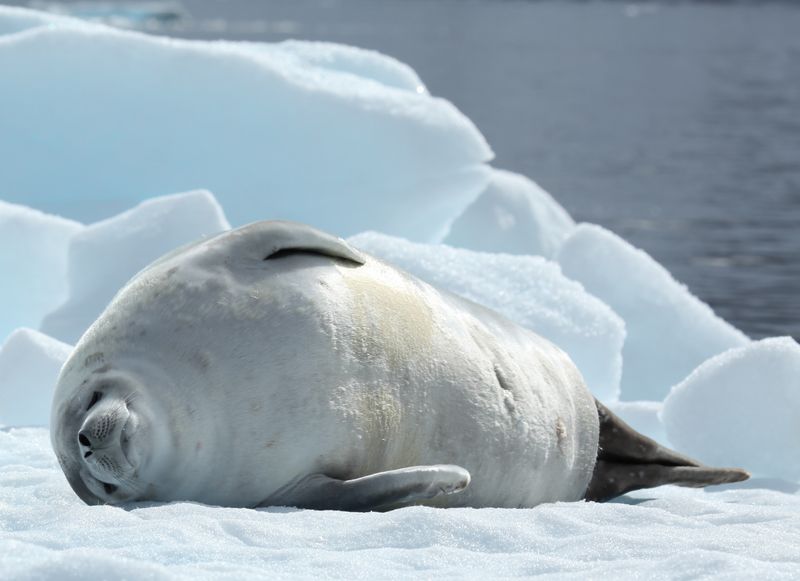
Despite its name, the Crabeater Seal doesn’t eat crabs; instead, it feeds mainly on Antarctic krill, using its uniquely adapted teeth to filter them from the water. Crabeater seals are the most numerous seal species, with a population in the millions.
They inhabit the pack ice zone surrounding Antarctica and exhibit strong swimming abilities, often traveling long distances in search of food.
Crabeater seals have a streamlined body and can move swiftly on both ice and water. Their high numbers and specialized diet make them a crucial part of the Antarctic ecosystem, impacting the balance of marine life in the region.
Ross Seal
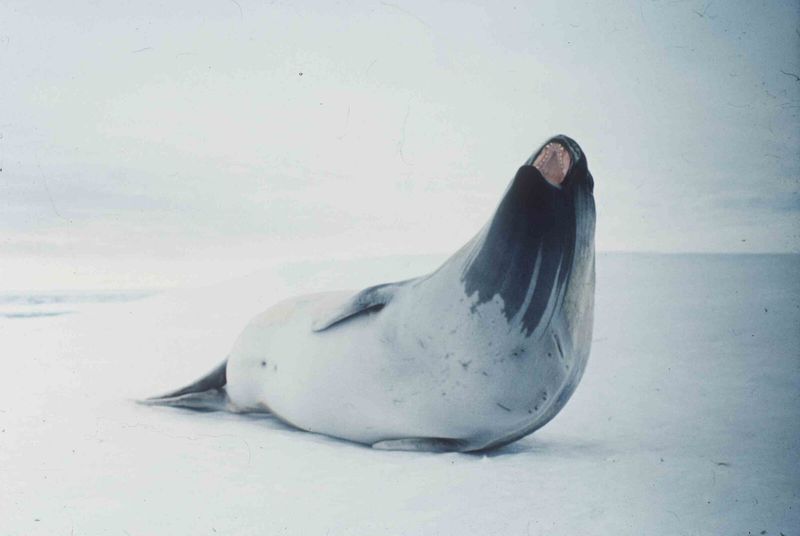
The Ross Seal is one of the least studied and most mysterious seals of Antarctica. With its large eyes and short snout, it has a distinct appearance compared to other seals. Ross seals are known for their unique, haunting vocalizations, which are believed to play a role in communication.
These seals primarily feed on squid and fish, diving deep into the icy waters. Their solitary nature and remote habitat make them difficult to observe in the wild.
Despite their elusive nature, Ross seals are an important part of the Antarctic marine ecosystem, contributing to the region’s rich biodiversity.
Ringed Seal
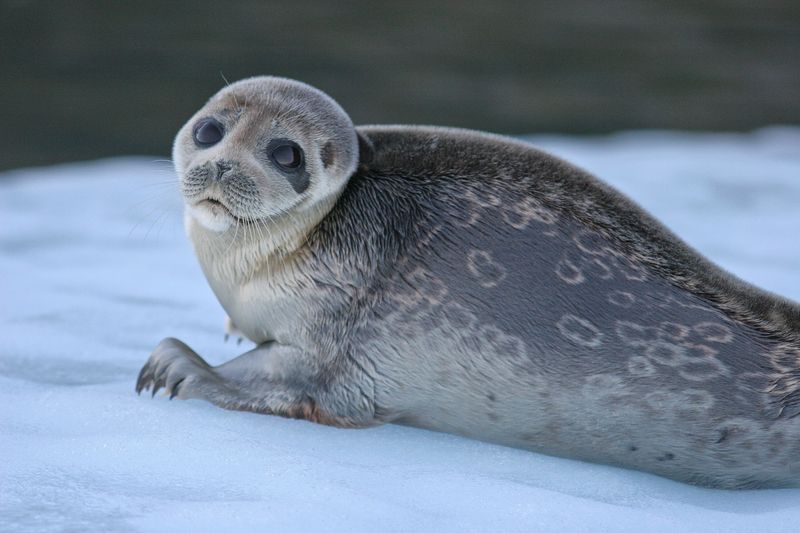
The Ringed Seal, with its characteristic ring-shaped patterns on its fur, is a small but resilient inhabitant of the Arctic. They are the primary prey of polar bears, making them a crucial component of the Arctic food chain.
Ringed seals maintain breathing holes in the sea ice, a vital adaptation for surviving the harsh Arctic winters. They feed on fish and invertebrates, diving beneath the ice to hunt.
Their pups are born with a soft white coat, providing camouflage against the snowy landscape. This species’ survival is closely linked to the health of the Arctic environment, making them indicators of climate change.
Ribbon Seal
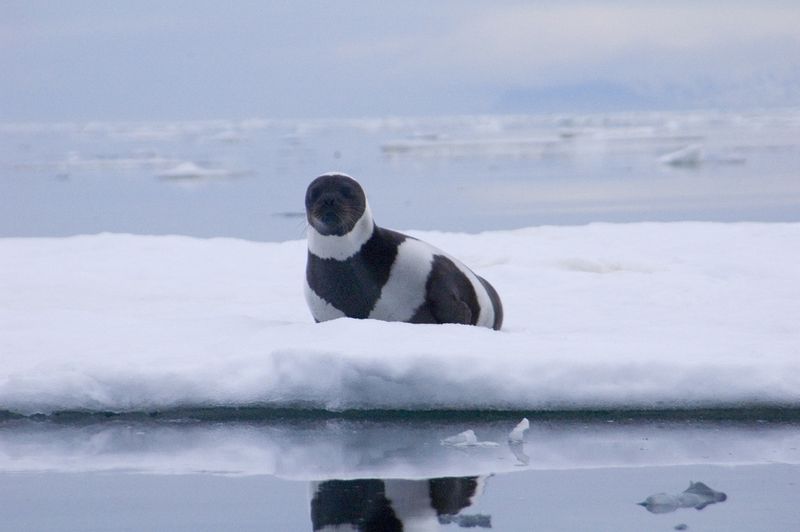
Known for its striking appearance, the Ribbon Seal sports bold white stripes against a dark body. Found in the North Pacific and Arctic Oceans, they are elusive and rarely seen by humans.
Ribbon seals are solitary animals, spending most of their time in the water. They have a varied diet that includes fish, squid, and crustaceans.
During the breeding season, they haul out onto ice floes to give birth and molt. Their unique coloration serves as camouflage among the ice and shadows. Despite their elusive nature, ribbon seals are a fascinating subject for researchers and nature enthusiasts alike.
Gray Seal
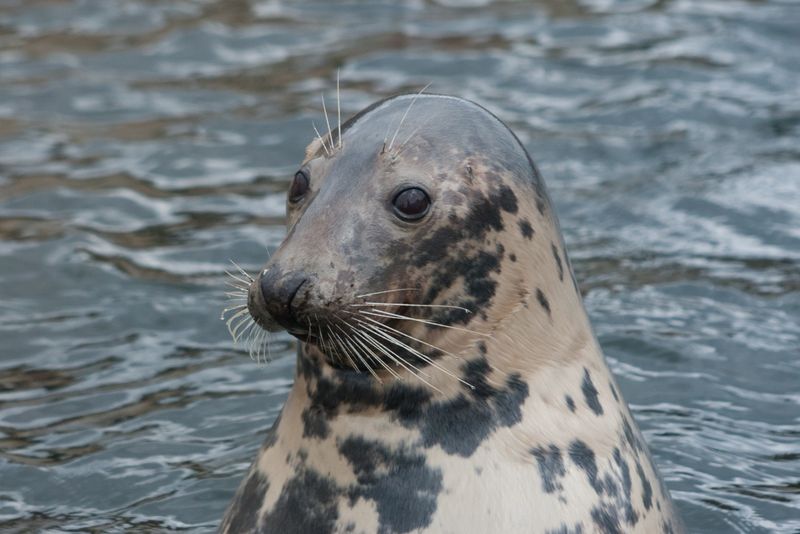
The Gray Seal, known for its horse-like profile and spotted gray coat, is a familiar sight along the North Atlantic coasts. These seals are social creatures, often found in large colonies on rocky shores.
Gray seals are skilled hunters, preying on a variety of fish and invertebrates. They are capable of diving to depths of over 300 feet and can remain submerged for up to 20 minutes.
A curious fact about gray seals is their vocal repertoire, including a range of sounds used for communication. These seals play a significant role in their ecosystems, balancing the populations of their prey species.
Antarctic Fur Seal
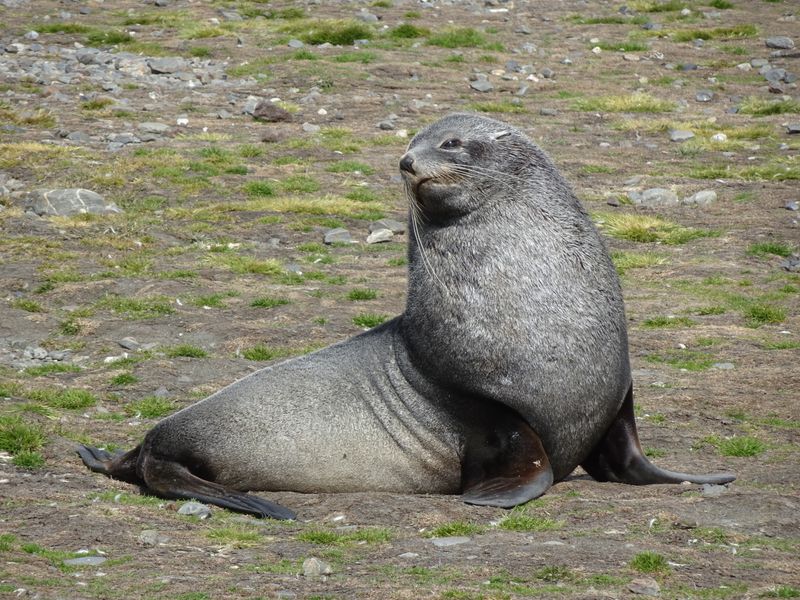
Antarctic Fur Seals, with their dense fur and prominent whiskers, primarily inhabit the islands of the Southern Ocean. Once hunted to near extinction for their pelts, their populations have rebounded, showcasing nature’s resilience.
These seals are agile on land and sea, feeding mainly on krill and fish. They are known for their playful behavior, often seen engaging in social interactions within their colonies.
Interestingly, male Antarctic fur seals establish territories and harems during the breeding season, showcasing impressive physical displays. Their recovery from near extinction is a testament to successful conservation efforts and nature’s ability to heal.

